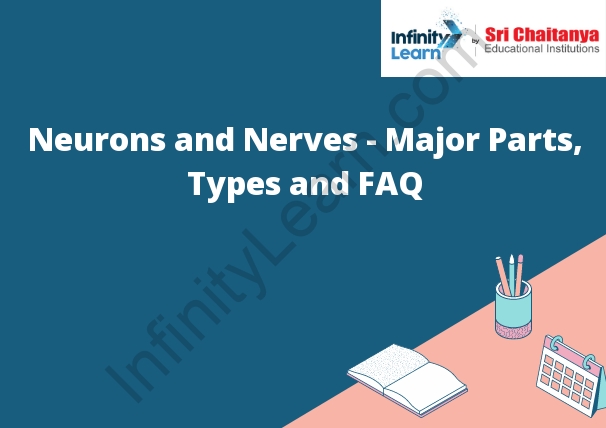Neurons And Nerves-
A neuron is a specialized cell that processes and transmits information in the nervous system. The nervous system is a complex network of cells that transmit signals between different parts of the body. Neurons are essential for transmitting these signals, and they rely on a variety of proteins to function properly.
Nerves are bundles of neurons that transmit signals between the brain and the rest of the body. Nerves are covered in a protective layer of tissue called the sheath. The sheath helps to protect the nerves and ensure that the signals are transmitted accurately.

Major Parts-
The nervous system is a complex collection of specialized cells that carry messages throughout the body. The nervous system can be divided into two main parts: the central nervous system and the peripheral nervous system. The central nervous system is made up of the brain and spinal cord. The peripheral nervous system includes all the other nerves in the body.
The brain is the control center of the nervous system. It receives messages from the body’s sensors and sends instructions to the muscles and organs. The brain is protected by the skull and surrounded by cerebrospinal fluid. The spinal cord is a long, thin, cable-like structure that extends from the base of the brain down the back. The spinal cord carries messages between the brain and the rest of the body.
Nerves are the thin, wire-like structures that carry messages between the brain and the rest of the body. Nerves are made up of two types of cells: neurons and glial cells. Neurons are the cells that carry messages. Glial cells are the cells that support and protect the neurons.
The peripheral nervous system includes all the other nerves in the body. The peripheral nervous system is divided into two parts: the somatic nervous system and the autonomic nervous system.
The somatic nervous system controls the voluntary muscles. The autonomic nervous system controls the involuntary muscles.
The autonomic nervous system is divided into two parts: the sympathetic nervous system and the parasympathetic nervous system. The sympathetic nervous system is the “fight or flight” system. It prepares the body for action by speeding up the heart rate and increasing blood flow to the muscles. The parasympathetic nervous system is the “rest and digest” system. It slows the heart rate and relaxes the muscles.
A neuron is a nerve cell in the body. It is the main component of the nervous system. Nerves are bundles of neurons. The nervous system is responsible for sending and receiving messages throughout the body.
The brain is the control center of the nervous system. It contains the highest concentration of neurons in the body. The brain controls movement, thought, emotions, and all other activities that occur in the body.
The spinal cord is a long, slender, cord-like structure that extends from the base of the brain. It carries messages between the brain and the rest of the body.
The peripheral nervous system is made up of the nerves that are outside of the brain and spinal cord. These nerves control the muscles and organs in the rest of the body.
The autonomic nervous system is made up of the nerves that control the involuntary activities of the body, such as heart rate, breathing, and digestion.
Types-
1)Neurons-
A neuron, also known as a nerve cell, is a specialized cell that is found in the brain and spinal cord. They are responsible for transmitting messages between the brain and the rest of the body. Neurons have three main parts: the cell body, the dendrites, and the axon.
The cell body is the largest part of the neuron and contains the nucleus and other organelles. The dendrites are long, thin branches that extend from the cell body and receive messages from other neurons. The axon is a long, thin tube that extends from the cell body and transmits messages to other neurons.
There are three types of neurons: sensory neurons, motor neurons, and interneurons. Sensory neurons are responsible for transmitting messages from the body to the brain. Motor neurons are responsible for transmitting messages from the brain to the body. Interneurons are responsible for connecting other neurons and transmitting messages between them.
The function of neurons is essential for normal body function. They are responsible for transmitting messages between the brain and the rest of the body, which allows us to move, feel, think, and breathe. When a neuron is injured or dies, it can lead to a number of health problems, such as paralysis, seizures, and cognitive impairment.
Neurons are very complex cells and scientists are still learning a great deal about their function and how they interact with other cells in the body. However, research has shown that they are very important for normal body function and when they are injured or die, it can lead to a number of health problems.
2)Nerves-
There are three types of nerves in the body: sensory, motor, and autonomic.
The sensory nerves are responsible for sending messages from the body to the brain. These messages tell the brain what is happening in the body and what the body is feeling.
The motor nerves are responsible for sending messages from the brain to the body. These messages tell the body what to do.
The autonomic nerves are responsible for controlling the body’s automatic functions, such as heart rate, breathing, and digestion.





